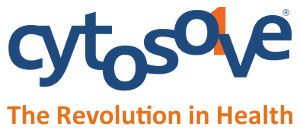|
Newsletter | June 2021

Statement From Our Chairman & CEOIn 2003, when I went back to M.I.T. to pursue my Ph.D. in Systems Biology to create the first computational platform that could mechanistically model complex biological processes and diseases, that was thought impossible. Four years later, in 2007, I invented CytoSolve and demonstrated its viability to scalably build and compute large-scale models. Following that, our team published major papers in peer-reviewed journals to validate the CytoSolve platform. One of the important milestones was when CytoSolve received an FDA allowance for a multi-combination therapeutics for Pancreatic Cancer discovered completely in CytoSolve. Today, CytoSolve has pioneered an entire industry. Our Research Division has partnerships with over 40 major scientific institutions. Our Testing Division is helping companies globally formulate products that really work long before wasting time on expensive in vitro and in vivo testing. More recently, our growing Discovery Division is making breakthroughs in identifying synergistic combinations of molecules with high efficacy and low toxicity – discoveries that could not be possible with conventional methods. We have begun this newsletter to keep you up-to-date of the industry CytoSolve is defining. I look forward to exploring how CytoSolve can help you. Please feel free to set up a time with me directly: Book an appointment with Dr. Shiva Ayyadurai. Warmest regards,
Industry NewsAmerican Society for Clinical Pharmacology & Therapeutics (ASCPT) is one of the most respected scientific associations in the world. CytoSolve was honored to deliver the State of the Art Lecture to over 1,500 scientists and industry leaders. This video will provide you a wonderful insight into the development of CytoSolve and its power to revolutionize health and medicine.
Nitric oxide (NO) produced by vascular endothelial cells is a potent vasodilator and an antiinflammatory mediator. Regulating the production of endothelial-derived NO is a complex undertaking, involving multiple signaling and genetic pathways that are activated by diverse humoral and biomechanical stimuli. To gain a thorough understanding of the rich diversity of responses observed experimentally, it is necessary to account for an ensemble of these pathways acting simultaneously. In this article, we have assembled four quantitative molecular pathways previously proposed for shear-stress-induced NO production.
Download this article published in the Journal of CELL's Biophysical Journal. CytoSolve, Inc., 701 Concord Avenue, Cambridge, MA 02138. Phone: +1.617.553.1015 © 2019. CytoSolve, Inc. All rights reserved. |
Agricultural Sciences, 2015, 6, 630-662 © 2015 by authors and Scientific Research Publishing Inc.
DOI: 10.4236/as.2015.67062
Abstract:
Safety assessment of genetically modified organisms (GMOs) is a contentious topic. Proponents of GMOs assert that GMOs are safe since the FDA’s policy of substantial equivalence considers GMOs “equivalent” to their non-GMO counterparts, and argue that genetic modification (GM) is simply an extension of a “natural” process of plant breeding, a form of “genetic modification”, though done over longer time scales. Anti-GMO activists counter that GMOs are unsafe since substantial equivalence is unscientific and outdated since it originates in the 1970s to assess safety of medical devices, which are not comparable to the complexity of biological systems, and contend that targeted GM is not plant breeding. The heart of the debate appears to be on the methodology used to determine criteria for substantial equivalence. Systems biology, which aims to understand complexity of the whole organism, as a system, rather than just studying its parts in a reductionist manner, may provide a framework to determine appropriate criteria, as it recognizes that GM, small or large, may affect emergent properties of the whole system. Herein, a promising computational systems biology method couples known perturbations on five biomolecules caused by the CP4 EPSPS GM of Glycine max L. (soybean), with an integrative model of C1 metabolism and oxidative stress (two molecular systems critical to plant function). The results predict significant accumulation of formaldehyde and concomitant depletion of glutathione in the GMO, suggesting how a “small” and single GM creates “large” and systemic perturbations to molecular systems equilibria. Regulatory agencies, currently reviewing rules for GMO safety, may wish to adopt a systems biology approach using a combination of in silico, computational methods used herein, and subsequent targeted experimental in vitro and in vivo designs, to develop a systems understanding of “equivalence” using biomarkers, such as formaldehyde and glutathione, which predict metabolic disruptions, towards modernizing the safety assessment of GMOs.



